Make Your Own Exercises
Make Your Own Exercises From Fiddle Tunes
There are exercises hidden within any music piece that you’re learning. Take note of anything that challenges you in that piece. When you focus on an obstacle it becomes the perfect exercise to help you develop the skill you need to play the song.
Here’s How To Make You Own Exercises
- Play a tune
- Identify the hard parts
- Just practice the hard parts
- Once you get them, make them a little bit harder
- Return to the tune
What’s difficult about this song?
Let’s use The Irish Washerwoman as an example.
First, you have to be able to identify what is difficult for you. A teacher can point this out. If you don’t have a teacher, then you can be your own teacher. Try to pay attention to what are the hard parts and then practice them.
If you’re using sheet music, simply bracket all the hard parts with a pencil. I still do this with things I’m learning. Here’s an example from a book called Melodius Double Stops that I’m practicing:
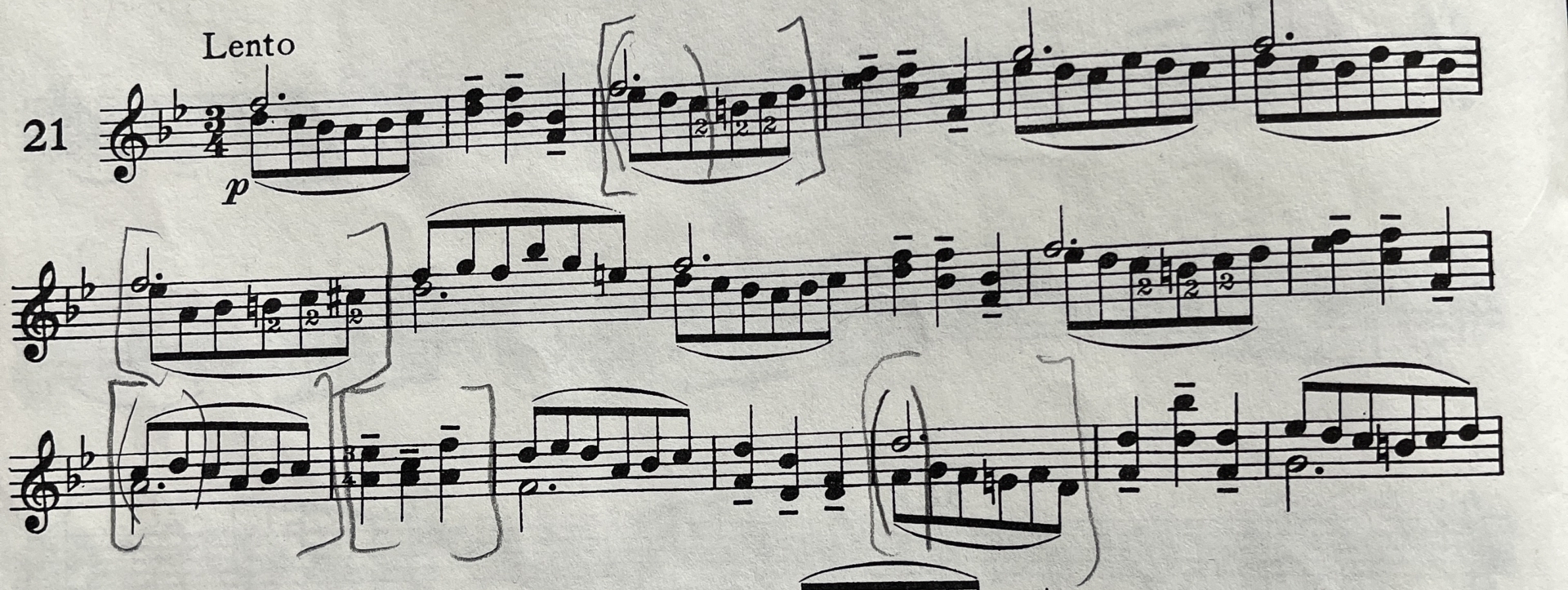
Notice that I bracket larger sections as well little 2-3 note challenges. Once I have marked up the music, I only practice the exercises. This makes for more efficient use of my practice time. It’s maybe the essential idea of Deliberate Practice.
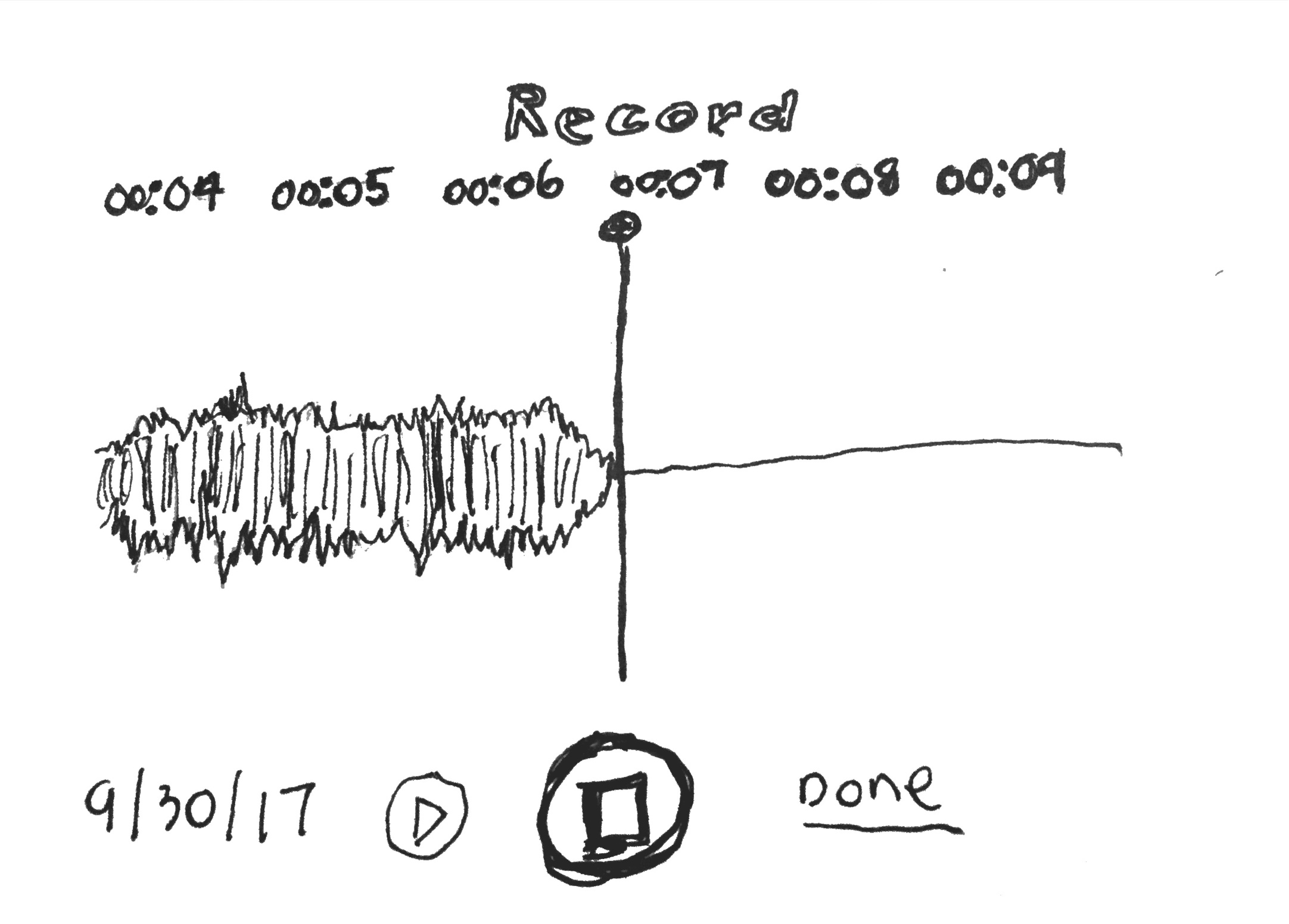
If you’re not sure what the hard parts are, then simply record yourself playing the tune or piece. Then, listen back to the recording and identify the parts that are difficult for you. Take note of these difficult parts in your practice journal and then work on them by creating exercises.
In the tune The Irish Washerwoman, the very first quarter presents some challanges:
A1-D3-3-0-3-3-A1-D3-A1-3-L2-1

After playing through it a few times you may notice that A1-D3 is particularly hard. To quote Colonel Hans Landa from the movie Inglourious Basterds THAT’S A BINGO!

Now that you’ve identified the difficult part, you’re ready to make exercises to practice it. Yes!
D3-3-A1-1
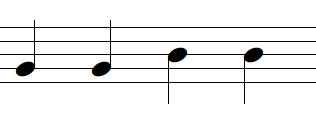
Note: a good practice strategy is to play each note twice on difficult parts.
How to practice the difficult parts
Let’s make exercises from each difficult part and practice the exercise in four ways:
- Just practice the motion
- Single, slow repetitions
- Looping
- Slower, faster
- Transposing
Once you’ve identified your exercise, practice the motions without even making sound. Relax the hands and breathe. Once you work out the motions, you might find that you feel joy with the simple act of doing the motion. Learn more here.
Next, practice the exercise with single reps. This allows your hands and ears to slowly learn and figure out the mechanics of that difficult piece. If necessary, return to just doing the motions.
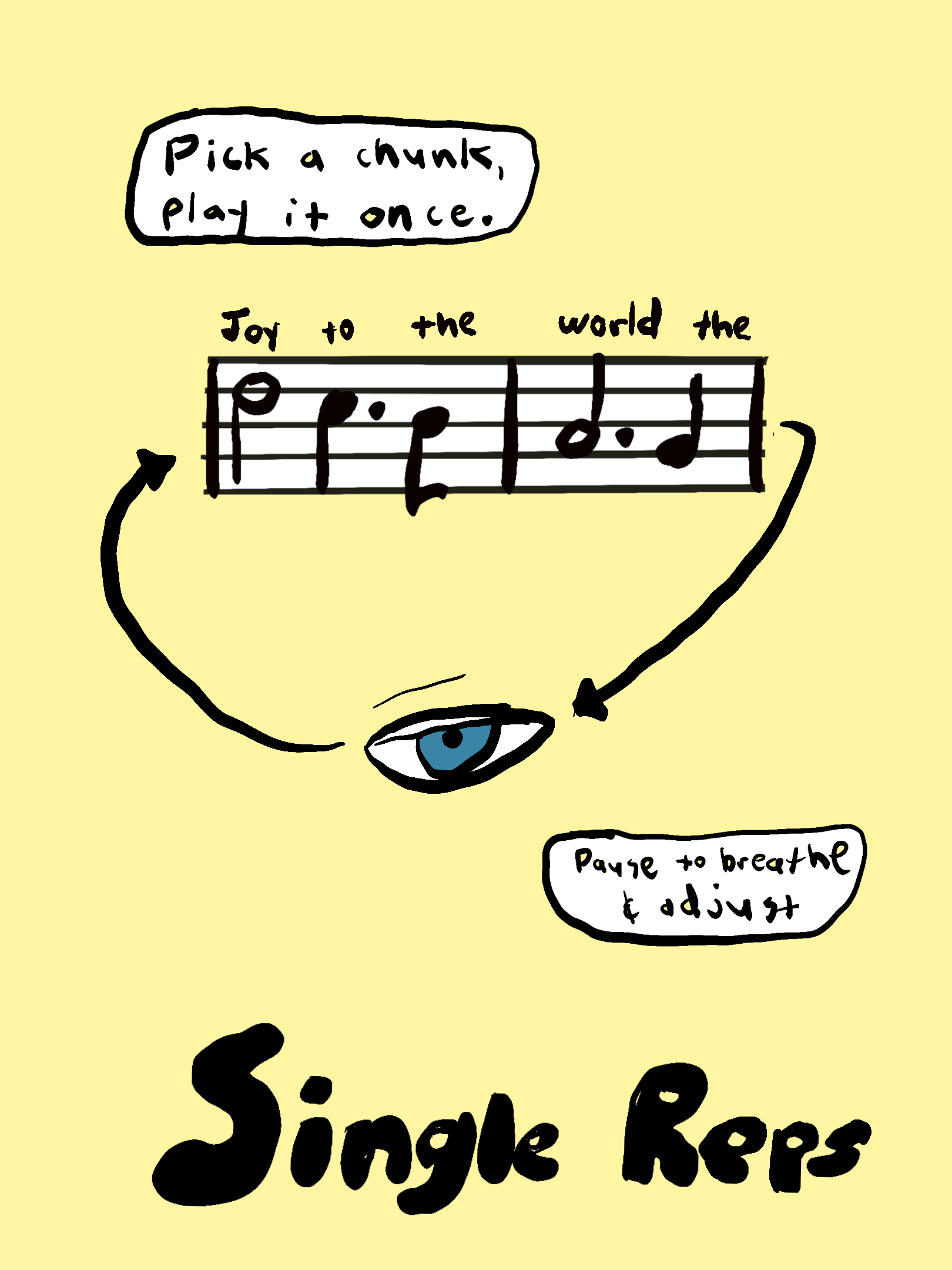
What is actually hard? It might be just a single note. What part of your body is struggling with this? Are you getting tense and not breathing? During this step, experiment with different ways to do this difficult part. See if you can enjoy the feeling of movement in your hands.
Once you’ve worked out the mechanics, loop on the exercise. Looping is one of the best practice techniques you can do. You move from thinking to a state of playing and flow. This is where things start to sound like music…so it can be quite satisfying.
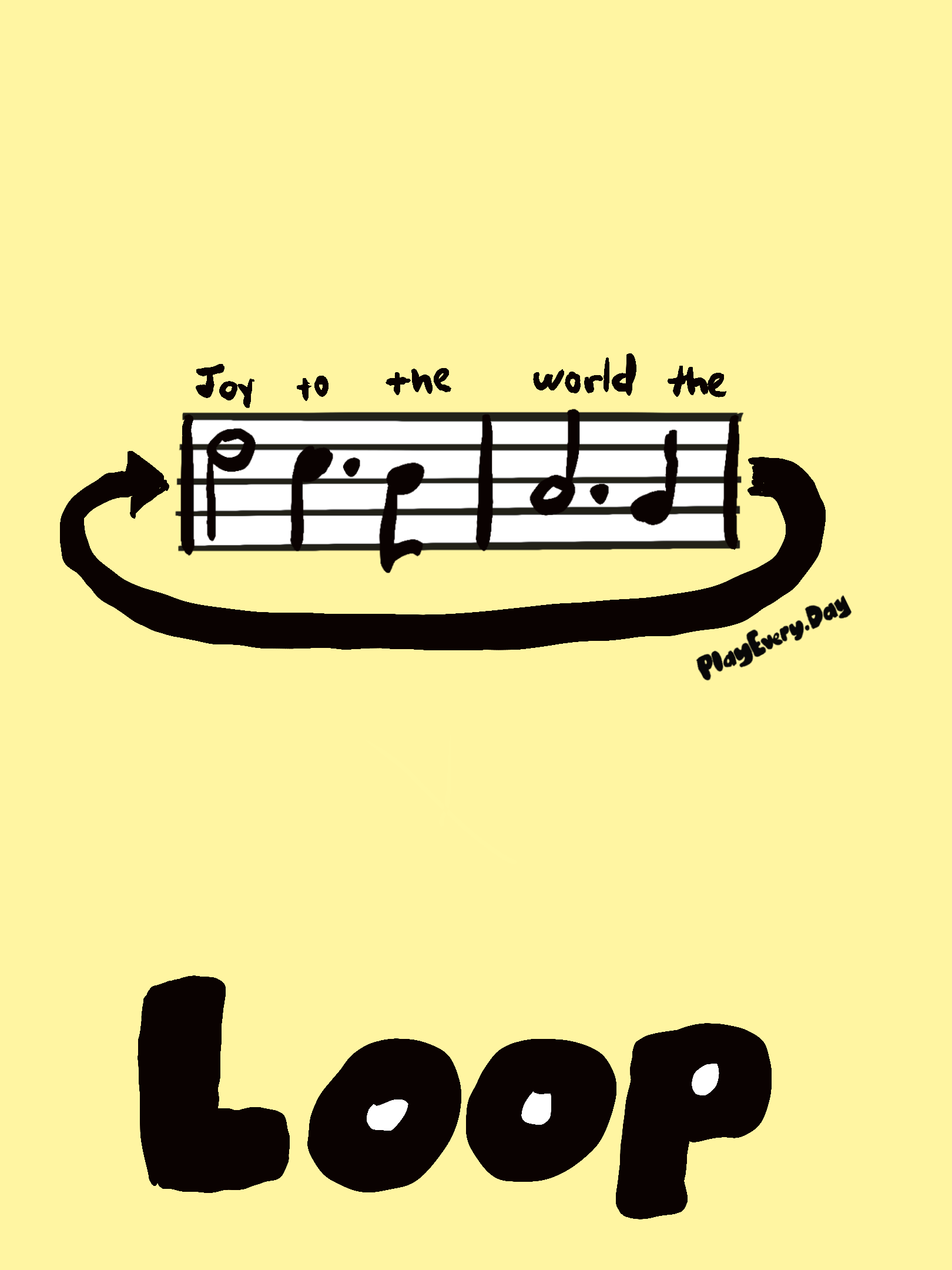
The repetition will help your hands learn and remember how to do it. You’ll also start to get a feeling of musical flow with the difficult part.
After looping for a few minutes is it still difficult? It might be. If so, then go back to step one. Don’t be too proud to do this. Being able to take a step backward is ultimately a forward step.
If you can loop it with flow then repeat the process with all the other hard parts.
Make it a little harder!
Once you can play all the hidden exercises in a piece, make them a bit harder. This is called Desirable Difficulty. You improve that skill even further. Plus, when you return to the original exercise, it will be easier because you just played it in a more challenging way.
Ways to add Desirable Difficulty
Transpose it to another string. So for our Irish Washerwoman example, you can start on D3 or E3 instead of A3:
D1-G3-3-0-3-3-D1-G3-D1-3-L2-1
E1-A3-3-0-3-3-E1-A3-E1-3-L2-1
Sequence the transposition with the original into a bigger exercise. Once you can play the transposition, sequence it into a bigger exercise. I’ll start with the lowest version and move towards higher strings:
D1-G3-3-0-3-3-D1-G3-D1-3-L2-1 | A1-D3-3-0-3-3-A1-D3-A1-3-L2-1 | E1-A3-3-0-3-3-E1-A3-E1-3-L2-1
Play it super slow. If you do it with a metronome it becomes more challenging. This is also the Jedi knight way to play faster.
Play it at your fastest tempo. Again, use a metronome. If you can’t finish the exercise then you’re going to fast. Learn more here.
Play at different volumes. This may not be harder, but it will help you practice the exercise.
In conclusion
You don’t need to play through dry boring exercises to improve your fiddling. You can make up challenging exercises from the tunes you love.
You may find that once you can play difficult parts with confidence, that these become the most memorable parts of the tune for you, maybe even the parts you like best.
Two ways I can help you level up your fiddling
- Sign up for the FiddleHed newsletter below.
- Sign up for the Free Two-week Trial. You’ll get full access to all courses and group lessons. Plus, I’ll send you some free lessons tailored to your current skill level.
Thanks for being here 🙏
Further
Fiddling With Deliberate Practice
Fiddling With Desirable Difficulty
Peak: Secrets from the New Science of Expertise
